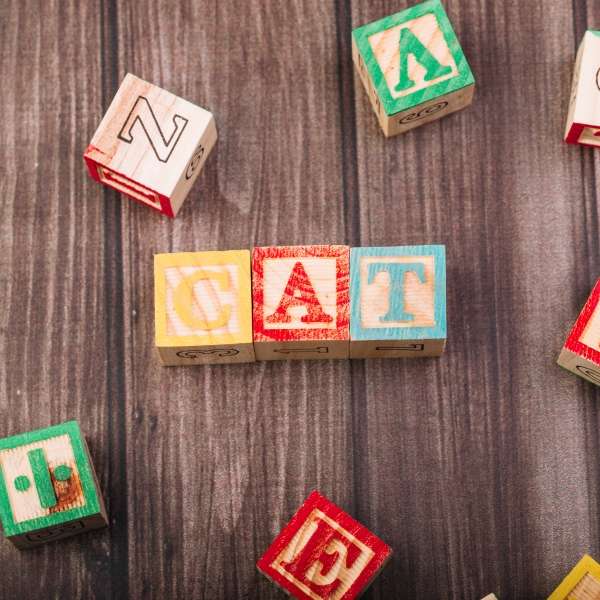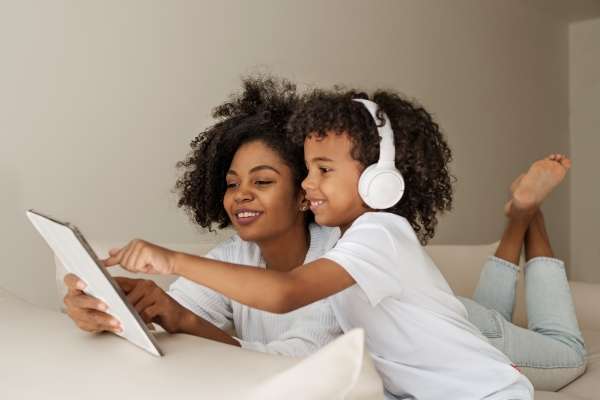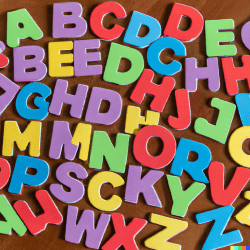Introduction: The Importance of Helping Your Child with Letter Sounds
Did you know that being able to identify letter sounds kickstarts your child’s journey towards being a proficient reader? Yes, you heard it right! When you help your child with letter sounds, you’re essentially unlocking the world of phonics for them, which is the backbone of reading and spelling skills.
By knowing the sounds that individual letters and combinations of letters make, your child will be able to ‘decode’ words, an essential skill in reading. But you may wonder, how exactly can you make this process engaging for your little one?
Well, sit back and worry no more, because in this article, we’ll explore some exciting and effective techniques that make learning letter sounds not just informative, but also a whole lot of fun.

You’ll be armed with all the strategies you need to help your child thrive in this significant step of their learning journey. Let’s get started, shall we?
How Can Music Help Your Child with Letter Sounds?
Alphabet Songs and Rhymes:
Ever heard the saying, “Music is a universal language?” Well, it turns out, it’s not just a saying but a reality when it comes to early learning! You see, music has a way of engraving information deep into our memory. Think about it, we all still remember those catchy jingles from our childhood commercials, don’t we? The same concept applies when you’re aiming to help your child with letter sounds.
Alphabet songs and rhymes are an unbeatable combo when it comes to teaching letter sounds. These tunes are crafted to be catchy, enjoyable, and full of the crucial content we’re aiming to teach – letter sounds. For example, a classic like the “Alphabet Song” articulates each letter sound clearly as it weaves a melodious rhythm. By singing along with your child, you help them internalize each unique sound tied to a letter.
Another way to tap into musical magic is through playful rhymes. Rhymes that incorporate letter sounds can create vivid and memorable associations for your child. When they hear a sound, they’ll recall the rhyme, and just like that, the sound sticks!

Visual Aids to Help Your Child with Letter Sounds
Letter-Sound Associations
Who doesn’t love a good picture show? When it comes to helping your child with letter sounds, visual aids can be your secret weapon. They bridge the gap between abstract concepts like letter sounds and concrete, tangible visuals. It’s one thing to tell a child that the letter ‘a’ makes the ‘ah’ sound; it’s another to show them a flashcard with an ‘a’ and an apple, uttering ‘ah’ for apple.

Arm yourself with flashcards or letter magnets. On each card, have a letter and a corresponding image of an object that begins with that sound. Think ‘b’ for ball, ‘c’ for cat, and so on. As you go through each flashcard, emphasize the sound the letter makes and the name of the object.
Letter magnets can turn your refrigerator door into a learning playground. As you prepare a meal, your little one can be matching letters to sounds on the fridge. Before you know it, your child will be associating letter shapes with sounds subconsciously. It’s like magic!
Engaging the Senses to Help Your Child with Letter Sounds
Multisensory Activities
How about some hands-on learning? Activities like creating sensory bins with objects that start with different letter sounds or using tactile materials like sand or playdough for letter tracing can stimulate your child’s senses. As they touch, see, and hear the letter sounds, they’re likely to grasp them better.

Game-Based Learning
Letter Sound Games: Turning Learning into Play
Imagine this: You tell your child, “Let’s find something that starts with the ‘m’ sound.” Off they go, scurrying around the house in search of an object. Their little eyes light up as they return triumphantly with a ‘mug’. Not only have they associated the ‘m’ sound with a word, but they’ve also had a great deal of fun doing it!
Another game to consider is “I Spy”. It’s simple, interactive, and can be played anywhere. In this game, you’ll say, “I spy with my little eye something that begins with the ‘s’ sound.” Your child then looks around to find something that begins with that sound. It could be a ‘sock’, a ‘sandwich’, or even a ‘sibling’!
These games are not just entertaining; they provide a safe space for your child to explore sounds and learn at their own pace. It takes away the pressure of learning and replaces it with the thrill of a challenge. And before you know it, your child will be looking forward to these ‘learning’ sessions!
Harnessing Technology to Help Your Child with Letter Sounds
Phonics Apps and Resources: Interactive Learning
In the digital age, a myriad of interactive tools can make learning both entertaining and effective. Enter educational phonics apps and online games – they’re a fun, modern twist on traditional learning methods.
Consider this: your child is using a tablet, deeply engrossed. But instead of watching a cartoon, they’re playing a game where they’re navigating a spaceship by recognizing and pronouncing letter sounds correctly. Or maybe they’re using an app that rewards them with virtual stickers each time they correctly associate a sound with its corresponding letter.
The beauty of these digital resources is their interactivity. They provide instant feedback, allowing your child to understand and correct mistakes in real-time. Plus, they can practice at their own pace, revisit tricky sounds, or move ahead once they’ve mastered a particular sound.
And don’t worry about screen time. Most of these resources are designed with child-friendly interfaces and are mindful of healthy screen usage. They balance learning and fun, ensuring your child enjoys the process without compromising on their overall development.
Sound Blending
Building Words
Think of it as assembling a puzzle: each piece has a unique sound, and together, they form a picture – or in this case, a word. This is the essence of sound blending, a critical step to help your child with letter sounds.
You’ve probably witnessed the sparkle in your child’s eyes when they successfully build a tower of blocks. Now, imagine that joy amplified when they realize they can build words!
Let’s take the word ‘cat’ as an example.
It’s a simple, three-letter word that you can use to introduce your child to sound blending. Break it down to its individual sounds: ‘c’, ‘a’, and ‘t’. Guide your child to pronounce each sound separately, then together. When they realize that ‘c-a-t’ makes ‘cat’, their sense of accomplishment will be immense!
As they get comfortable with simple words, gradually increase the complexity. Introduce four-letter words, then five-letter words, and so on. Ensure that you’re patient and encouraging throughout this process, as it can be challenging at first.
Sound blending is a fun and rewarding way to improve your child’s reading and spelling skills over time.

Reading Aloud to Help Your Child with Letter Sounds
Storytime
Storytime can be a golden opportunity to help your child with letter sounds. It’s an activity that combines the magic of storytelling with the critical skill of phonemic awareness. It’s learning cloaked in a narrative, making it fun, engaging, and memorable.
Here’s how it works: as you embark on the adventure in the pages of a book, pause occasionally and point out a word that starts with a specific letter. For example, while reading a story about a bear who loves honey, you might say, “Look at the word ‘bear’. It starts with the ‘b’ sound. Can you make the ‘b’ sound?”
Reading aloud and emphasizing letter sounds introduces your child to a wide array of words and sounds, and the visual connection between what they see and what they hear deepens their understanding.
It also enhances their listening skills and boosts their vocabulary. For instance, when you come across a word that is new to them, break it down, sound it out, and explain what it means.
Remember to make this an interactive process. Encourage your child to point out letters, sound out words, and ask questions.
FAQ: When should I start helping my child with letter sounds?
The process of helping your child with letter sounds can begin as early as when your child starts to express an interest in letters and words. This typically occurs around the age of 2 or 3, but it’s important to note that every child is unique and will develop at their own pace.
During these early stages, introducing your child to the alphabet and associating letters with everyday objects can be a great start. For example, when reading a picture book, you can point out a ‘C’ and associate it with ‘Cat.’ You don’t need to force the process – instead, let your child’s interest guide the learning journey.
Be patient and supportive. It’s okay if your child doesn’t pick up on all the sounds immediately. Learning is a process, and it’s crucial to provide a safe and encouraging environment for your child to learn in.
Your positive reinforcement will boost their confidence, making learning a more enjoyable and fruitful process for them.
Conclusion: Your Role in Helping Your Child with Letter Sounds
The day your child reads their first word is a day you’ll always remember. It’s a significant milestone in their life, marking the beginning of a lifelong journey with words, sentences, stories, and books. It starts with understanding letter sounds, and that’s where you come in.
Start by incorporating the tips and strategies we’ve shared in this guide into your daily routines. Introduce the vibrant world of alphabet songs and rhymes to your child. Make learning tangible with visual aids like flashcards and letter magnets. Turn your home into a playground of discovery with letter sound games. Unleash the power of technology with educational phonics apps. And weave the magic of stories into learning with reading-aloud sessions.
In conclusion, helping your child with letter sounds is an exciting journey filled with laughter, learning, and loads of special moments. Embrace it, enjoy it, and remember, you’re doing an incredible job!
Happy teaching!





